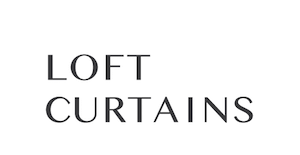
We traveled to Belgium and visited this Belgium's largest and oldest 5-generation family managed linen producer in Meulebeke, Belgium. It is the world's finest mill that we source our Belgian Linen fabric - Antwerp and Spa collections from.
Why is Belgian Linen?
Growing condition
The best flax comes from Belgium, Holland, and France as the region's soil characteristics are particularly suited for growing flax, with sea wind contributing the required moisture and temperature.
Strong, long & clean fibers are used to spin the best quality yarn for weaving a top-quality fabric.
Weaving - quality control
All the linen are woven at the facility that dates back to 1904. All steps of production are computer monitored and integrated into quality control systems.
- Before weaving : linen yarns are examined for strength, evenness and pliancy
- After weaving : loomstate fabric is examined & mended
- After finishing : finished fabric is mended a 2nd time & tested towards internal standards (shrinkage, seam slippage, color matching, etc.)
Belgian Linen quality label
The Belgian Linen quality label is an internationally recognized trademark, known around the world as the finest available, that applies only to linen fabrics woven and finished with certified Belgian manufacturers.
Master of Linen label
The Master of Linen label is a registered international trademark of excellence for Western European linen production only.

How is Linen made?
Linen is made of flax fibers. The growing cycle of flax is short, with only 100 days between sowing and harvesting. Each flax plant blooms for one day only.
Harvesting: The flax is uprooted to preserve the full potential of each plant.
Drying: The flax is stacked in hedges to dry. The seeds are removed once dried.
Retting and turining: The flax is exposed to moisture to break down, the fibers then are bound together and turn into strands of golden glow fibers.
Stripping and combing: This process separates the longer fibers (to create the finest linen yarn) and shorter fibers(to create coarser yarns)
Spinning: The process draws out the fibers into sinuous strands and then plied together on spinning looms.
Weaving, bleaching and dyeing: The looms are monitored by a central computer to ensure quality. After bleaching and dyeing, fabrics get various treatments e.g. laundered, fire-resistant e.g.








